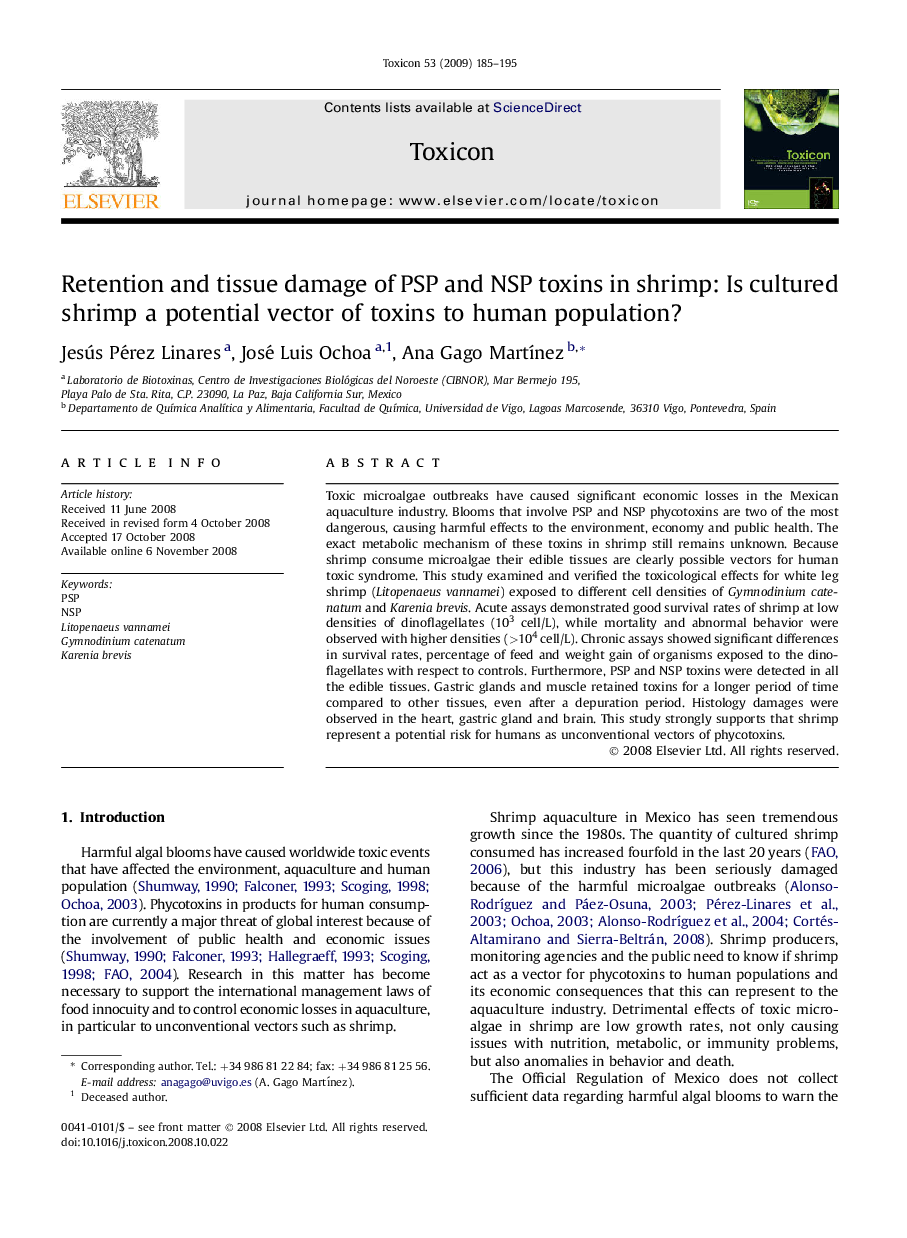| کد مقاله | کد نشریه | سال انتشار | مقاله انگلیسی | نسخه تمام متن |
|---|---|---|---|---|
| 2066465 | 1077171 | 2009 | 11 صفحه PDF | دانلود رایگان |

Toxic microalgae outbreaks have caused significant economic losses in the Mexican aquaculture industry. Blooms that involve PSP and NSP phycotoxins are two of the most dangerous, causing harmful effects to the environment, economy and public health. The exact metabolic mechanism of these toxins in shrimp still remains unknown. Because shrimp consume microalgae their edible tissues are clearly possible vectors for human toxic syndrome. This study examined and verified the toxicological effects for white leg shrimp (Litopenaeus vannamei) exposed to different cell densities of Gymnodinium catenatum and Karenia brevis. Acute assays demonstrated good survival rates of shrimp at low densities of dinoflagellates (103 cell/L), while mortality and abnormal behavior were observed with higher densities (>104 cell/L). Chronic assays showed significant differences in survival rates, percentage of feed and weight gain of organisms exposed to the dinoflagellates with respect to controls. Furthermore, PSP and NSP toxins were detected in all the edible tissues. Gastric glands and muscle retained toxins for a longer period of time compared to other tissues, even after a depuration period. Histology damages were observed in the heart, gastric gland and brain. This study strongly supports that shrimp represent a potential risk for humans as unconventional vectors of phycotoxins.
Journal: Toxicon - Volume 53, Issue 2, February 2009, Pages 185–195